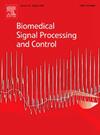Optimized dynamic global structure enhanced multi-channel graph neural network based automatic cataract disease classification
IF 4.9
2区 医学
Q1 ENGINEERING, BIOMEDICAL
引用次数: 0
Abstract
The most prevalent condition that causes vision distortion is cataracts. The greatest method to reduce the danger and prevent blindness is to detect cataracts accurately and timely detection. Research interest in the cataract detection systems based on artificial intelligence is recently increased. In this manuscript, Optimized Dynamic Global Structure Enhanced Multi-channel Graph Neural Network depend Automatic Cataract Disease Classification (DSEMGNN-CACD-SETOA) is proposed. The input fundus images are obtained using glaucoma dataset and the image is given to pre-processing. The input images are pre-preprocessing utilizing Generalized Multi-kernel Maximum Correntropy Kalman Filter (GMMCKF) to resize and normalize the image. The pre-processed imagery is provided to the categorization. Finally, the pre-processed imageries are provided to Dynamic Global Structure Enhanced multi-channel Graph Neural Network (DSEMGNN) to classify cataract disease as Referable Glaucoma and Non-referable Glaucoma. The Stock Enhancing Trading Optimization Algorithm (SETOA) is proposed for improving the weight parameter of DSEMGNN for cataract disease classification. The proposed KOAC-GCIGNN-AcME-SBOA technique is implemented on Python. The proposed approach attains 28%, 30.78% and 25.29% higher accuracy, 15.08%, 20.58%, and 15.25% higher precision when comparing with the existing methods like GLA-Net: A global–local attention network for automated cataract categorization (GLAN-CNN-ACC), cataract grading technique depending on deep convolutional neural networks and stacking ensemble learning (CGM-DCNN-SEL),automated cataract detection scheme with deep learning for fundus imageries (ACD-DNN-FI)respectively.
基于优化动态全局结构增强多通道图神经网络的白内障疾病自动分类
最常见的导致视力扭曲的疾病是白内障。准确、及时地发现白内障是减少危险、预防失明的最大方法。近年来,基于人工智能的白内障检测系统的研究日益增加。本文提出了一种基于优化动态全局结构增强多通道图神经网络的白内障疾病自动分类方法(dsemgnn - cad - setoa)。利用青光眼数据集获取输入的眼底图像,并对图像进行预处理。利用广义多核最大相关系数卡尔曼滤波(GMMCKF)对输入图像进行预处理,调整图像大小和归一化。将预处理后的图像提供给分类。最后,将预处理后的图像提供给动态全局结构增强多通道图神经网络(DSEMGNN),将白内障疾病分类为参考型青光眼和非参考型青光眼。为了改进DSEMGNN用于白内障分类的权重参数,提出了Stock - enhanced Trading Optimization Algorithm (SETOA)。提出的KOAC-GCIGNN-AcME-SBOA技术是在Python上实现的。与GLA-Net: A global-local attention network for cataract automated classification (gln - cnn - acc)、基于深度卷积神经网络和堆叠集成学习的白内障分级技术(CGM-DCNN-SEL)、基于眼底图像深度学习的白内障自动检测方案(ACD-DNN-FI)等现有方法相比,本文方法的准确率分别提高了28%、30.78%和25.29%、15.08%、20.58%和15.25%。
本文章由计算机程序翻译,如有差异,请以英文原文为准。
求助全文
约1分钟内获得全文
求助全文
来源期刊

Biomedical Signal Processing and Control
工程技术-工程:生物医学
CiteScore
9.80
自引率
13.70%
发文量
822
审稿时长
4 months
期刊介绍:
Biomedical Signal Processing and Control aims to provide a cross-disciplinary international forum for the interchange of information on research in the measurement and analysis of signals and images in clinical medicine and the biological sciences. Emphasis is placed on contributions dealing with the practical, applications-led research on the use of methods and devices in clinical diagnosis, patient monitoring and management.
Biomedical Signal Processing and Control reflects the main areas in which these methods are being used and developed at the interface of both engineering and clinical science. The scope of the journal is defined to include relevant review papers, technical notes, short communications and letters. Tutorial papers and special issues will also be published.
 求助内容:
求助内容: 应助结果提醒方式:
应助结果提醒方式:


